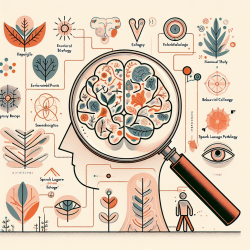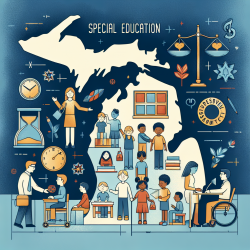Introduction
As practitioners dedicated to enhancing the well-being of children, it is crucial to stay informed about the latest research findings that can impact our practice. A recent cohort study conducted in China provides valuable insights into the complex relationship between Internet Addiction (IA), Non-suicidal Self-injury (NSSI), depressive symptoms, and social support among adolescents. This blog aims to distill these findings and suggest practical steps for implementation or further research.
Key Findings from the Study
The study, titled "The role of depressive symptoms and social support in the association of internet addiction with non-suicidal self-injury among adolescents: a cohort study in China," explores the mediated effect of depressive symptoms and the moderating effect of social support on the relationship between IA and NSSI. Here are the key findings:
- Internet Addiction was found to be independently associated with an increased risk of NSSI among adolescents.
- Depressive symptoms were identified as a mediator in the relationship between IA and NSSI, suggesting that IA may lead to depressive symptoms, which in turn increase the risk of NSSI.
- Social support was found to moderate the indirect effect of IA on NSSI, indicating that higher levels of social support can buffer the negative impact of IA.
- Gender differences were observed, with the mediation effect of depressive symptoms being more pronounced in females.
Implications for Practice
These findings have significant implications for practitioners working with adolescents. Here are some practical steps that can be taken:
- Screen for Internet Addiction: Regularly assess adolescents for signs of IA, especially those who exhibit depressive symptoms or engage in NSSI.
- Focus on Mental Health: Develop interventions that address depressive symptoms in adolescents with IA to potentially reduce the risk of NSSI.
- Enhance Social Support: Encourage the development of strong support networks for adolescents, which can serve as a protective factor against the negative effects of IA.
- Consider Gender Differences: Tailor interventions to address the specific needs of male and female adolescents, given the observed differences in the mediation effect of depressive symptoms.
Encouraging Further Research
While this study provides valuable insights, further research is needed to explore the nuances of these relationships. Practitioners are encouraged to engage in or support research efforts that examine:
- The role of different sources of social support (e.g., family, peers) in moderating the effects of IA.
- Longitudinal studies in diverse cultural contexts to validate and expand upon these findings.
- Interventions that specifically target the reduction of IA and its associated depressive symptoms.
Conclusion
The interplay between Internet Addiction, depressive symptoms, and social support is complex, but understanding these relationships can lead to more effective interventions for adolescents. By focusing on reducing depressive symptoms and enhancing social support, practitioners can make a significant impact on the mental health and well-being of young individuals.
To read the original research paper, please follow this link: The role of depressive symptoms and social support in the association of internet addiction with non-suicidal self-injury among adolescents: a cohort study in China.










